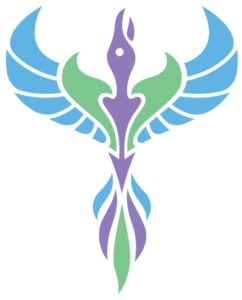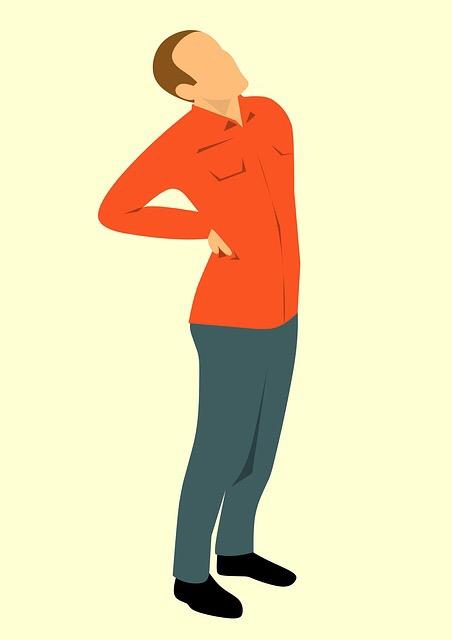Posts Tagged ‘chiropractor Park Slope’
Dreading Sleep with Sciatica
But laying down should help sciatica, right?
Clinically, the answer is yes: the act of reclining is decompressive in nature- it allows for space to open between the vertebrae, negating pressure that squeezes your discs and puts pressure on the nerves. But sciatica is not necessarily purely determined by impingement from problems with the vertebrae- it can also occur when muscles like the piriformis become overly-tight and push down on the nerve. So we can see that the first step to solving sciatica is to get a proper diagnosis. But what then? Sleeping with sciatica may require you to change your sleeping surface to a firmer, more supportive mattress; it may call for you to place a pillow under your knees to relieve tension in the lower spine. But neither of these is a long-term solution- they are designed to help you feel more comfortable so that you can get more sleep and wake up with less pain. The real solution is to find and address the cause of your sciatica.
If your sciatica interferes with sleep, there are multiple steps we can take for treatment:
- Number one is resolving spinal alignment issues that are putting pressure on the nerve.
- We then use massage acupuncture to relieve tightness from the surrounding musculature and augment the body’s natural healing process
- We demonstrate easy-to-follow stretches that can be implemented in your pre and post-sleep routines.
- We show you when to use ice and heat to relieve pain, prevent inflammation and encourage healing.
Defeating sciatic insomnia and the related problem of pronounced sciatic nerve pain in the morning is a long game. At Community Chiropractic & Acupuncture of Park Slope, we are your sciatica resource and we will remain by your side for the long haul! Give our office a call to schedule an appointment today.
The Pre-Breakfast Stretching Routine of Champions
In the morning, focus on spinal elongation
No matter what your job is, the likelihood is high that your spine will undergo a lot of compression throughout the day. Sitting and standing, depending on your posture, each contribute varying degrees of downward pressure on your vertebrae and the discs which separate them. Starting your spine off on the right food means that you start the process of fighting against this compression from the word go, each and every day. Any morning routine that accounts for your back should include stretches that focus on spinal elongation and, by extension, decompression. Here is a little three minute routine that can set you off nicely:
- Start by resting in child’s pose and welcoming the new day with deep breathing
- Next choose downward-facing dog, a gentle stretch that provides full spinal decompression
- Finish with cat and then cow stretch, two poses that alleviate pressure on the intervertebral discs
The benefits of starting your day with stretching are too good to ignore. These stretches will make getting through a full day of work easier, by boosting circulation, improving range of motion and alleviating tension from the musculature that supports your spine. As with any new exercise regime, you should always consult with a medical professional before beginning. We are standing by at our new office in Brooklyn to help you make your daily life more comfortable.
Two Daily Movements for Resetting Neck Alignment
Two daily movements that help us restore balance and reduce tension:
- Shoulder blade squeezes: don’t try to squeeze a pencil between your shoulders, despite what some people suggest. This is too extreme of motion. Instead, focus on gently squeezing your shoulder blades and opening up your chest. This movement relieves tension in the thoracic and cervical segments.
- Chin tucks: this simple movement is effective for strengthening the muscles that are responsible for maintaining spinal alignment through the cervical segment and supporting the weight of your head.
Retraining your spine into a state of balance starts at the top
Always pay attention to your posture by performing posture resets as often as is possible. When you feel your head creeping forward, choose to realize that this is responsible for your aching, stiff neck at the end of the day; choose to reset your head atop the spine and give your neck a quick stretch. These little actions add up to make a world of difference in your spinal health.
The Importance of Pelvic Stability
Why do I want a more stable pelvis?
Think about all the joints in the pelvic region:
- Sacroiliac
- Pubic symphysis
- Iliofemeral (hip) joint
Pelvic stability means that all the muscles in this region are strong and able to prevent excessive movement from destabilizing the balance of joints in the region. While each of these joints obviously needs to move, excessive movement will create problems, especially for the spine. The fact is, the pelvis is the anchor of your upper body and thus your spine- if it is moving around without any stabilization, then the base of your spine has no stability either. This instability has ramifications in every movement you make. No matter who you are, pelvic stability is important for preventing injury in all types of activity.
A stable pelvis and a happy spine
A stable pelvis complements a stable core, forming the essential components of the framework which supports your spine. If you are interested in finding out more about simple ways to improve pelvic stability, give our office in Park Slope a call to schedule an appointment today.
Give Your Neck a Break with Cervical Traction
Reaping the benefit of cervical traction daily
People who don’t have disc-related conditions may still want to reap the decompressive benefits of cervical traction. Many of us leave work every day with a sore, stiff neck and choose to do nothing about it. If you have reached the end of your tether with chronic neck stiffness, try giving it a bit of traction at the end of the day- you only need a few minutes! Grab a foam roller and lay down, placing it under the base of your skull. Rest in this position and then gently start moving your head from side to side. The foam roller should provide a slight decompression, as well as a therapeutic massage effect.
Treating your neck in Park Slope
At our new office in Brooklyn, we are standing by to help all the stiff and sore necks in our community. We want to help you integrate neck care into your daily routine before your cervical vertebrae suffer from more serious conditions like herniated discs. If you are interested in finding out more about our brand of preventive healthcare, give our office in Park Slope a call to schedule an appointment today.
Cervicogenic Vertigo: When Dizziness and Neck Pain Overlap
Cervicogenic vertigo is a difficult condition to diagnose
When we suspect cervicogenic vertigo, we perform diagnostic tests such as the Dix Halpike Maneuver and the Head Fixed Body Turn test, both of which seek to gently articulate vertebrae in the neck in order to reproduce vertigo symptoms. Reproduction of vertigo during the DHM is an indicator of benign paroxysmal positional vertigo, not cervicogenic vertigo; reproduction of vertigo during the HFBT is a positive indicator of cervicogenic vertigo. These two tests allow us to narrow down the cause of your cervicogenic vertigo which allows us to move on toward treatment.
Mechanical problems are most effectively treated by chiropractic
By excluding BPPV, we exclude the most common cause of vertigo, which strengthens the case for true cervicogenic vertigo. The vital difference between the two is that BBPV is caused by disorder in the inner ear while cervicogenic vertigo has a true mechanical cause; that means that chiropractic is one of the most effective methods for treating CV. CV responds well to spinal manipulation, myofascial release and other rehabilitative modalities. If you are interested in getting a clear diagnosis and plan for treatment regarding the cause of your vertigo, give our office in Park Slope a call to schedule an appointment today.
When Compression is Your Problem- Spinal Healing Through Yoga
Yoga for compression injuries
Compression is defined as any injury or condition in which undue pressure is placed on the spinal cord. Degenerative illnesses, ruptured discs, bone spurs and acute injury can all cause compression, among many other factors. This brand of spinal pain is life-altering and most people will have to live and manage the pain for the rest of their lives. Enter yoga, which has long been used to improve symptoms related to compression suffering. Our guidelines for using yoga to account for compression include:
- A priority on being gentle in your movements.
- Avoiding excessive transfer of forces and extreme movements.
- Focusing on traction, or the lengthening of the spine during each sequence.
- Avoiding poses that exacerbate your condition
It is important to know which poses can actually worsen the pain. For compression-related pain, poses to avoid include:
- Camel Pose
- Boat Pose
- Shoulder standing or legs-up-the-wall
- Seated forward folds or toe touching poses
Using yoga to effectively account for your back pain in Park Slope
You should never start a new plan to account for your back pain without first consulting a health care professional. At Community Chiropractic & Acupuncture, we are in the business of helping people get an accurate diagnosis and picture of their back pain before we implement any holistic care strategies. Once we know the exact cause of your pain, we can begin incorporating modalities such as chiropractic care, massage, acupuncture and yoga to make powerful changes in your pain. If this sounds like something you are interested in, please give our new office in Brooklyn a call to make an appointment today.
How to Regain Control Over Office Posture
The most common postural deficiencies in the office
At Community Chiropractic & Acupuncture, we are treating more and more people whose bodies are suffering from a 9-5 lifestyle. The main postural shortcomings we see from office workers include:
- Rounded shoulders and a hunched back
- Forward head posture
- Anterior pelvic tilt
Often, all three of these are present at the same time. A single poor posture tends to pull our bodies out of alignment and cause imbalance in the musculature which is supposed to support good, healthy posture. As a result, good posture becomes harder to maintain and your body adjusts to support poor posture- the ugly cycle feeds itself. At your Park Slope Chiropractor, we focus on breaking this cycle by:
- Teaching good postural habits
- Undoing tension in the musculature
- Increasing strength in the postural muscles
- Reestablishing alignment in the spine
- Rebalancing the musculature which supports the spine
The end result is a body that has the right input variables to support good posture in the first place. The only piece left in the puzzle is awareness- being proactive when your body is slipping into unhealthy postural patterns.
Let’s turn the tables on poor posture today
The fight for good posture is a hard battle to win on your own. At our office in Park Slope, we seek to be Brooklyn’s go to resource for postural health. If you are interested in turning the tables of posture in your favor, give our office a call to schedule an appointment today.
Body Drought: Functioning with Insufficient Water Supply
During an internal drought, your body is forced to make decisions
It is forced to prioritize, and the spine is not a priority. With deficient water supply, the body pulls water from the extremities and spine, reallocating it to the vital organs which simply cannot do without water. Your spinal discs, which rely on water to provide the shock-absorption and articulation between vertebrae, dry out. This effect manifests itself in more back pain, less range of motion and accelerated spinal degeneration. With an internal drought, any water that is put in is automatically routed toward the internal organs, and the spine continues to suffer.
Hydration helps you function your best
So what are we really looking for? To just hum along, with our body scrambling its resources to keep us functioning at the lowest possible level; or to provide our body and brain with the water they need to truly thrive? Drinking your daily recommended amount of water is the easiest and fastest way to start improving overall health, especially that of your spine.
When Lower Back Pain Flares: Movement Matters
Don´t skip exercise when you have back pain- just change your routine
With lower back pain, it is important to avoid movements that will exacerbate your condition. These movements include: bending, toe touches, sit ups, leg lifts, and twisting motions. Lower back pain is often accompanied by less range of motion, meaning that excessive movements can cause injury. Instead focus on these types of exercises:
- Yoga- especially child’s pose and bird dog, provides gentle stretches that challenge your core stabilizing muscles.
- Cardiovascular activity- even walking gets circulation flowing and releases tension in the musculature that creates a pull on the lower back.
- Focus on stretching the hamstrings- tight hamstrings create a pull on the lower spine which can wreak havoc in the lumbar vertebrae.
- Pelvic tilts- focus on undoing pelvic tilt and strengthening the core stabilizing muscles.
Movement speeds up the healing process
That being said, don’t speed into an exercise routine without checking with your Park Slope Chiropractor first. We can help design a multi-faceted, goal-oriented treatment plan for your specific body type and back pain. By combining chiropractic modalities including spinal adjustment and decompression, with targeted exercise and stretching, you can effect great improvements in your spinal health. If you are interested in using our services to manage lower back pain, give our office in Park Slope a call to schedule an appointment today.










